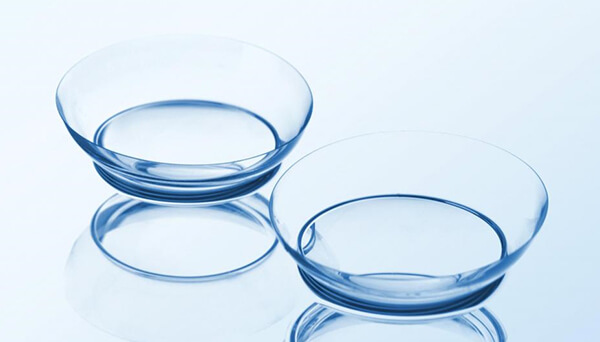If you've made a choice of using contact lenses instead of glasses, the next step is to choose the type of lens that suits you best. Now there are two available types of contact lenses on the market, namely soft contact lenses and hard contact lenses. Of course before you make the decision, you should know first what is the difference between soft lens and hard lens. Here are the advantages and disadvantages of each type of lens you need to know.
What is a soft lens?

Soft lenses or soft contact lenses are a type of soft contact lens that made of soft and flexible plastic that allows oxygen to easily penetrate the cornea. Newer soft lens materials are usually made of silicones, allowing more oxygen to enter the eye as long as you wear the lens.
Soft lenses are extended eye-wear contact lenses. That is, this lens can be worn continuously for the specified usage period (eg 7 days to 30 days) and then discarded. However, the life span usage will depend on the type of the lens and doctor's evaluation during eye routine checks.
There are two types of soft lens. Disposable, which means the lens should be used only one time then discarded and replaced by a new one for subsequent use. There is also a prescription so that soft lens can be used for a full day. Soft lenses of this type can also be used in a day and night, but must be replaced every day.
What is a hard lens?

Rigid Gas Permeable contact lenses (RGPs) are harder and more rigid contact lenses than soft lenses, but still allow oxygen to enter the eye. Generally, hard lenses provide clearer and sharper vision than soft contact lenses.
In addition, hard lenses tend to require less expensive maintenance costs because the it is more durable than soft lenses and more resistant to the cumulation of dirt deposits. Therefore, this hard lens replacement range time will be longer than soft lenses.
Which lens contacts are better for the eyes?
Before you decide what to buy, consider the advantages and disadvantages of each type of lens:
SOFTLENS
Advantages of soft lens:
- More comfortable, especially for the first usage.
- The adaptation period is shorter for new contact lens users.
- Ideal for intermittent or loose use.
- Less sensitive to foreign objects under the lens, such as dust.
- Rarely get out of the eye so it is more ideal for use during sports.
- Available in various colors.
Disadvantages of soft lens:
- Less durable than hard contact lenses.
- Can be dry, especially when using a hair dryer, in a hot room, or windy and dry weather, which causes discomfort for some people.
- Require more treatment
- Vulnerable to protein or fat deposits, that will reduce the performance of the lens in the long term
- Can absorb chemicals from the environment, that can cause eye irritation.
HARD LENS
Advantages of hard lens:
- Can correct the astigmatism of the cornea or cylindrical eye.
- Very durable.
- Easier treatment.
- Easy to use.
- Not causing dry eyes.
- Can maintain its shape.
- Available in bifocals and multifocals.
- Available in various colors.
Disadvantages of hard lens:
- Less comfortable at the beginning of usage.
- Adaptation period takes longer.
- More sensitive to foreign objects under the lens, such as dust.
- Easily released from the eye
- Lens can be scratched and broken.
- Usage can not be off-pairs.
Once you know the advantages and disadvantages of each lens, you can determine which type of contact lens you will choose and it would be better if you decide with your ophthalmologist before you start wearing contact lenses.
Any lenses you wear, remember to always take good care of them.

